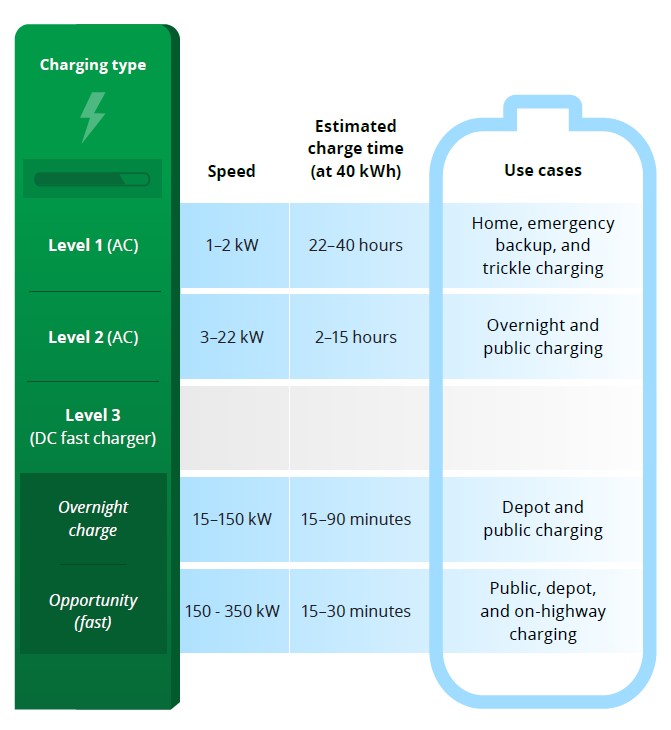Charging infrastructure a hurdle in EV transition, Deloitte Canada report says
The charging infrastructure is a critical constraint in the electric vehicle (EV) transition for the commercial vehicle industry in Canada, a new Deloitte Canada report reveals.
Strategic planning and collaboration across the fleet ecosystem are vital to overcome this challenge, according to Power to the Fleet: Choosing the best charging infrastructure and commercial ecosystem for your electric vehicles.
According to Deloitte research, commercial vehicles comprise just 20% of all vehicles, yet contribute more than 60% of road transport emissions, underscoring the urgency of the transition. Canada’s commitment to achieving 30% zero-emission new vehicle sales by 2030 and 100% new truck and bus sales by 2040 reflects a shared goal towards a sustainable future.

With more than a million EVs expected on Canadian roads by 2025, according to Natural Resources Canada (NRCan), stakeholders must collaborate effectively to meet the growing demand for charging infrastructure.
“Electrifying commercial fleets isn’t just about reducing emissions; it’s about future-proofing businesses for the evolving mobility landscape,” said Elizabeth Baker, partner in Deloitte Canada’s Supply Chain & Network Operations practice, and a leader in the firm’s fleet decarbonization offering. “By planning for electrification, companies can unlock new opportunities for efficiency, cost savings, and environmental stewardship.”
Green financing
The report says fleet owners must choose between behind-the-fence (private infrastructure) and outside-the-fence (public infrastructure) charging options based on their operational needs and business models. Selecting the right ownership model and accessing financing opportunities are crucial for successful infrastructure development.
Green financing and government grants can substantially reduce costs, facilitating broader electrification efforts. Deloitte estimates more than $3 billion in grants and incentives are available for zero-emission vehicle (ZEV) adoption and infrastructure development.
NRCan’s Zero Emission Vehicle Infrastructure Program, for example, has allocated $680 million to the development of charging infrastructure for ZEVs across Canada. Under the program’s stream targeting owners and operators of ZEV infrastructure — such as a fleet owner building a behind-the-fence charging network — NRCan can contribute 50% of total project costs, up to $10 million per project.
Innovative technologies
Innovative technologies like microgrids and energy storage enhance resilience and cut costs for behind-the-fence charging, offering increased site capacity and supplementary energy supply, the report says.
Bi-directional charging, where vehicles act as mobile battery storage, is being explored as an addition to microgrid systems, providing extra power to facilities or the grid.
Hydrogen fuel-cell-electric vehicles (FCEVs) may be preferable in certain applications and locations where battery technology alone isn’t sufficient, such as long-range transportation, according to the report. The full report can be downloaded here.
Have your say
This is a moderated forum. Comments will no longer be published unless they are accompanied by a first and last name and a verifiable email address. (Today's Trucking will not publish or share the email address.) Profane language and content deemed to be libelous, racist, or threatening in nature will not be published under any circumstances.